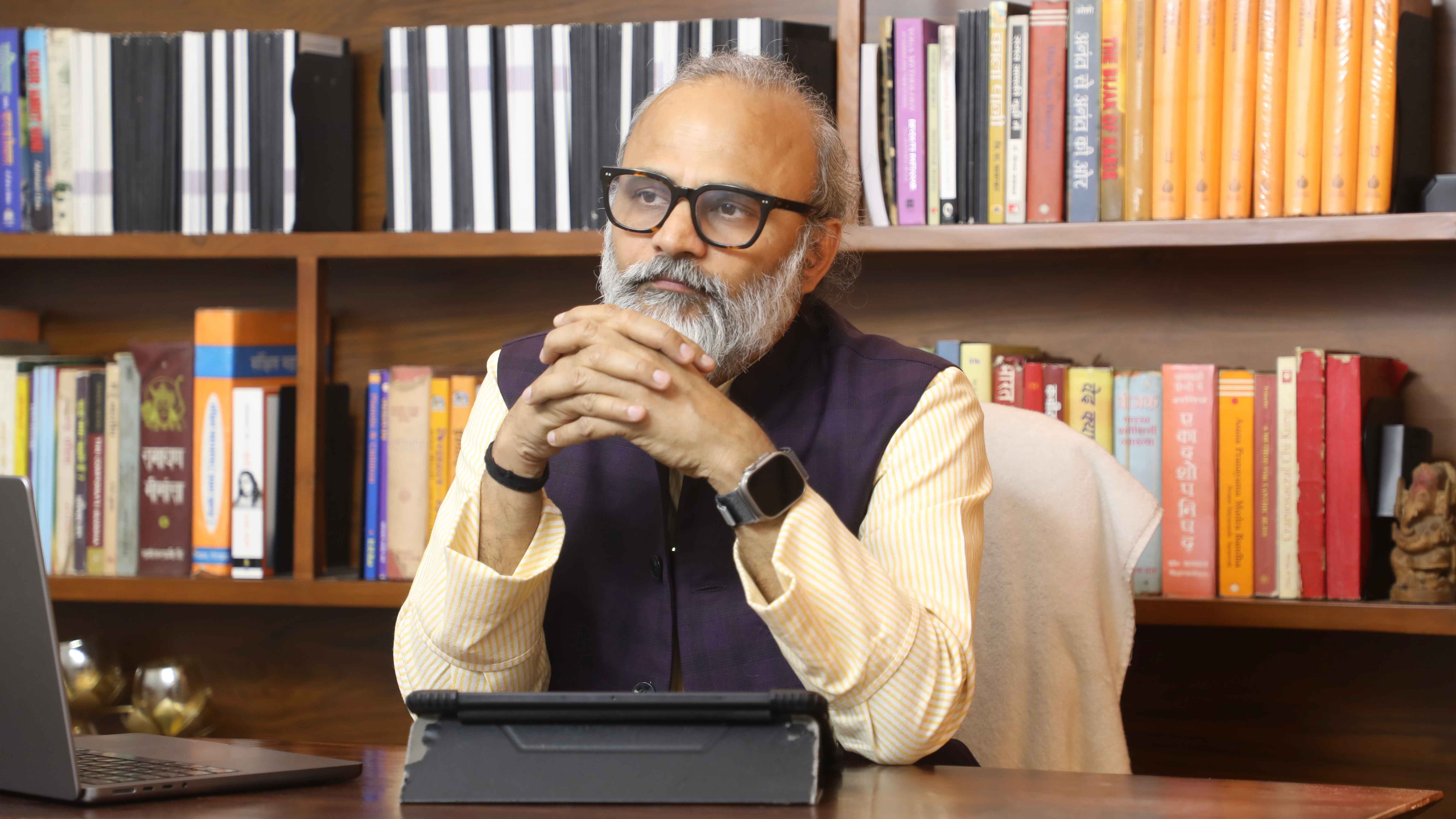
The Mastery in Attention Shifting
4 months ago By Yogi AnoopThe Mastery in Attention Shifting: A Dialogue between Yogi Anoop & His Disciple
Disciple: Gurudev, in one of your lectures, you mentioned controlling the mind along with the concept of pratyahara. Could you please explain how this “switching” or attention shifting happens in pratyahara? As you often say—moving the mind from one state to another—how is this really possible?
Yogi Anoop: That’s a very good question. Look, my child, it is quite easy to make children switch because their understanding is limited. They become focused on one object, and when you take that object away and give them something else, they get absorbed in the new one within moments. Their attention shifts easily. They may cry for a moment, but soon start playing with the new thing—their mind gets concentrated on it and forgets the previous one.
But our problem—as adults—is quite the opposite. Our attention span is longer, but it’s not guided by discretion. Once the mind gets stuck in a thought or object, it finds it hard to come out of it. That thought continues on its own. This is why, once the mind gets attached to something, it becomes difficult to leave it—whether the thought is positive or negative.
Suppose someone is deeply immersed in devotion, and I say, “Now withdraw your mind,” he won’t be able to. He cannot pull himself out of that ocean of emotion. The same feeling, the same thought keeps flowing—for hours. The core issue is, once a stream of thought begins in the mind, not only can the person not stop it, but he also fails to switch to something else. That is, he cannot shift his concentration to another subject.
This is also true for people with negative tendencies. Even if they want to remove their thoughts, they cannot—and this eventually becomes the root cause of many mental disorders.
Disciple: Gurudev, so is this a flaw in our mental tendency?
Yogi Anoop: Not a flaw, you may call it a tendency. Actually, we cling most to those thoughts that we ourselves have created—whether those thoughts are about living or dying. The thought either feels extremely pleasing or extremely disgusting, and in either case, we find it hard to detach. As a result, when the mind runs uncontrolled over the same thought again and again, the brain becomes fatigued—and gradually, the sense organs and major parts of the body also begin to wear out. This is where disease begins.
However, when we learn to switch our self-created thoughts, we begin to free ourselves from that clinging tendency. Before drowning in those thoughts or emotions, we manage to step out. This is a yogic art. Whether you switch based on knowledge or through the power of concentration, switch you must—otherwise, stress will increase.
The technique of knowledge is separation—where you say, “This is not me.” But in pratyahara, you switch—you come out of one thought and enter another using the same power of concentration. This is what we call mental management—this is yogic management—where you learn to withdraw the senses and the mind from the ocean of thoughts and emotions.
Disciple: Gurudev, this seems very practical. Could you share an example?
Yogi Anoop: Certainly. Sometimes, many problems arise in the office. You ignore them and get involved in another task—that is switching. That is what we call attention shifting. Look, a person who manages thousands of people in an office must have high switching capacity. If he doesn’t, it simply means he lacks the ability to manage those people.
You’re driving a car, many thoughts are running through your head, but you remove them and focus your attention on driving. This is practical. If you don’t understand this kind of behaviour, you won’t understand the behaviour of the mind either.
Disciple: Gurudev, in such situations, can we take the help of pranayama?
Yogi Anoop: Pranayama can be used to calm the mind before events and situations arise, so that we can face them better. But trying to switch the mind into pranayama during an incident is foolishness. When you’re in the middle of a situation, the mind must be managed with the same mind.
Once, I was in an Arab country, invited to a big house for dinner. Around 1 AM, I returned to the place where I was staying. As I stepped out of the car, I was suddenly surrounded by large dogs. The house had 4-5 unleashed big dogs, and they came running toward me.
I couldn’t run back to the car; the driver stayed inside and offered no help. I was left standing outside, alone.
Now tell me—should I have started doing pranayama in that moment so that I wouldn’t feel fear? Or so that I could protect myself? If I had done that, it would have been self-deception. I was indeed afraid—clearly afraid—but I did not let that fear reflect in my eyes, my face, or body language. What needed to be done was to manage the situation.
I gestured with my hands and began to lovingly call the dogs. I made a full effort to make them feel that I was their friend. They all came close, and I petted them, touched them, and showed affection.
Disciple (in amazement): Gurudev, did you completely remove the fear within? Was it gone?
Yogi Anoop: No, the fear was there. Deep within, it was present—but the management in that moment was so complete that the fear didn’t show outwardly. You cannot completely eliminate fear; it is inborn. If it were not meant to exist, it wouldn’t be present from birth. It is not man-made. It is natural. Your task is not to eliminate these so-called negative thoughts or instincts—but to prevent them from dominating your mind and brain. Fear may exist somewhere within, but you don’t let it dominate the external situation. And once the situation is handled, fear goes away on its own.
The fundamental point is—no thought should continue indefinitely just because it is driven by the mind. That is not right—for either the mind or the body. You must either stop it or switch it. This is where present-moment management and regulation become very important.
Management means your behaviour aligns with the situation—and even your thoughts should align with your behaviour. If you’re facing a problem and you begin suppressing or switching your thoughts somewhere else—that’s not right either.
Understand this: there’s only one way to break the continuity of uncontrolled thoughts—either become deeply engaged in the present moment, or enter a meditative state and nullify the mind. Pratyahara is the step before meditation—where the ability to switch becomes the first test of self-restraint.
Pratyahara is not just about stopping the senses—it is about balancing the entire lifestyle of the mind.
Recent Blog
Copyright - by Yogi Anoop Academy
